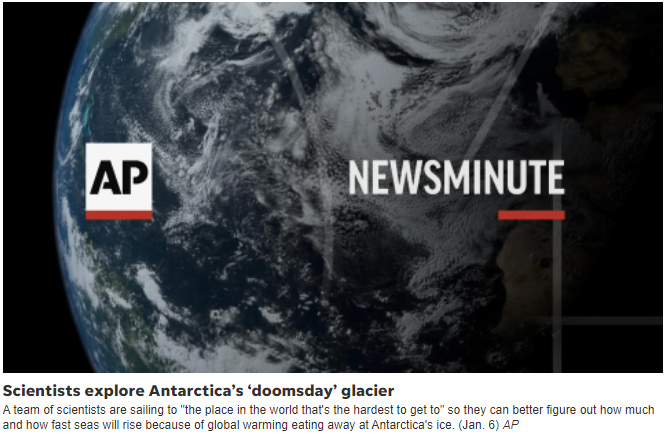'Not a good sign' : The temperature was 70 degrees above average near South Pole, a troubling record

A heat wave is hitting near the North and South Poles.
It was 70 degrees warmer than average in a part of Antarctica, the land area around the South Pole, while areas of the Arctic are more than 50 degrees warmer than normal, scientists say.
Officials at the National Snow and Ice Data Center in Boulder, Colorado, have been watching the Arctic, which has been warming two to three times faster than the rest of the globe. It had been experiencing temperatures unusual for mid-March, as it is nearing or at the melting point, according to the center's senior research scientist Walt Meier.
Then near the South Pole, Antarctica weather stations recorded record-setting highs this week. Temperatures hit 10 degrees (-12.2 degrees Celsius) Friday – 70 degrees above normal – at the Concordia station, which is two miles above sea level.
That same day temperatures hit 0 degrees at the even-higher Vostok station, beating the all-time record by about 27 degrees, according to a tweet from Maximiliano Herrera, a climatologist and extreme weather record tracker.
“They are opposite seasons. You don’t see the North and the South (poles) both melting at the same time,” Meier told The Associated Press Friday evening. “It’s definitely an unusual occurrence.”
The Vostok temperature marks the March record since data has began to be collected 65 years ago, Stefano Di Battista, a researcher who has published Antarctic climate studies, told The Washington Post, which first reported the warm Antarctic temperatures.
“In about 65 record years in Vostok, between March and October, values above -30°C (-86 degrees Fahrenheit) were never observed,” he told the Post.
On Friday, the Arctic as a whole was 6 degrees warmer than was normal from 1979-2000, according to the University of Maine’s Climate Reanalyzer, based on U.S. National Oceanic Atmospheric Administration weather models. The Antarctic continent was about 8.6 degrees warmer, it found. By comparison, the world as a whole was only 1.1 degrees (0.6 degrees Celsius) above the 1979 to 2000 average.
Meier and University of Wisconsin meteorologist Matthew Lazzara say the Antarctica heat wave is a rare occurrence rather than a significant sign of climate change. What likely happened was “a big atmospheric river” pumped in warm and moist air from the Pacific southward, Meier said.
However, if this persists, then it would be something to worry about. “Not a good sign when you see that sort of thing happen,” Lazzara told the Associated Press.
Source :
Maria Jimenez Moya
USA TODAY
Published on March 19, 2022
Contributing: The Associated Press
声明:本站文章版权归原作者及原出处所有。本文章系本站编辑转载,文章内容为原作者个人观点,登载该文章的目的是为了学习交流和研究,并不代表本站赞同其观点和对其真实性负责,本站只提供参考并不构成任何投资及应用建议。
本站是一个学习交流和研究的平台,网站上部分文章为引用或转载,并不用于任何商业目的。我们已经尽可能的对作者和来源进行了告知,但是能力有限或疏忽,造成漏登或其他问题,请及时联系我们,我们将根据著作权人的要求,立即更正或删除有关内容。本站拥有对本声明的最终解释权。








